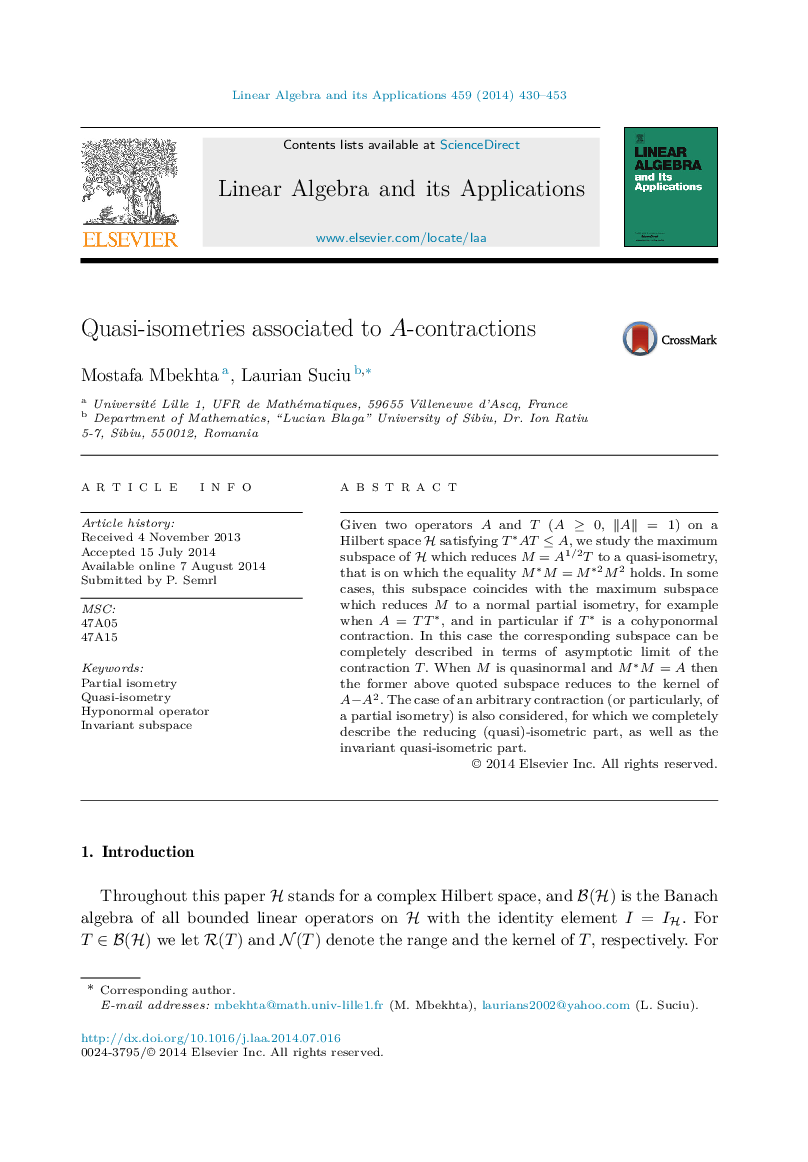| Article ID | Journal | Published Year | Pages | File Type |
|---|---|---|---|---|
| 4599497 | Linear Algebra and its Applications | 2014 | 24 Pages |
Given two operators A and T (A≥0A≥0, ‖A‖=1‖A‖=1) on a Hilbert space HH satisfying T⁎AT≤AT⁎AT≤A, we study the maximum subspace of HH which reduces M=A1/2TM=A1/2T to a quasi-isometry, that is on which the equality M⁎M=M⁎2M2M⁎M=M⁎2M2 holds. In some cases, this subspace coincides with the maximum subspace which reduces M to a normal partial isometry, for example when A=TT⁎A=TT⁎, and in particular if T⁎T⁎ is a cohyponormal contraction. In this case the corresponding subspace can be completely described in terms of asymptotic limit of the contraction T. When M is quasinormal and M⁎M=AM⁎M=A then the former above quoted subspace reduces to the kernel of A−A2A−A2. The case of an arbitrary contraction (or particularly, of a partial isometry) is also considered, for which we completely describe the reducing (quasi)-isometric part, as well as the invariant quasi-isometric part.
